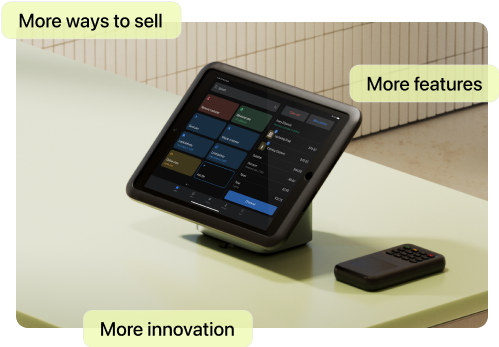When you send flowers to a friend, you probably hope that, at a minimum, the bouquet arrives on time and the flowers look fresh. But when the florist follows up with a thank you and a discount on your next order, they’re not just trying to meet your expectations; they’re trying to make you happy. They realize your entire experience is as important as the quality of the product itself.
Marketing experts call this type of connection customer happiness. It’s a powerful driver of business growth. Here’s why customer happiness is important, how to cultivate it, and the importance of measuring and tracking it.
What is customer happiness?
Customer happiness is a gauge of a customer’s emotional connection with a company. It goes beyond customer satisfaction (which focuses on meeting basic expectations) to describe feelings of delight, joy, affection, and kinship with a brand or its representatives.
Cultivating customer happiness can boost customer retention rates and encourage repeat purchases, which increases revenue and customer lifetime value (CLV). In fact, according to a Harvard article, 90% of customers who are highly satisfied with a brand say they are highly likely to return to that brand to make more purchases. Customer happiness improves brand loyalty, and loyal customers are more likely to engage in word-of-mouth marketing and actively look for ways to engage with and support your business. Making customers happy creates a virtuous cycle of positive reinforcement.
Factors that make customers happy
- Exceptional communication
- Responsiveness
- Quality
- Value
- Personalized experiences
- Excellent customer service
Understanding what makes customers happy starts with how to shape positive customer experiences. Here are six factors that contribute to customer happiness:
Exceptional communication
Provide timely, transparent, and consistent communication throughout the customer journey, particularly at these key touchpoints:
-
Post-purchase. Check in with your customers in the days or weeks following an order to offer product or service support, gauge purchase satisfaction, and request customer feedback.
-
After a complaint. Following up on a complaint—and again after a resolution is made—is an excellent customer service opportunity. Reaching out to thank a customer for contacting your support team and confirming you’ve solved their problem shows a genuine investment in the customer experience.
-
Special occasions. Celebrate birthdays, anniversaries, and purchasing milestones with special discounts or exclusive access to let your customers know you value them.
Responsiveness
Consistent engagement makes customers feel special, and responsive brands make that communication a two-way street. “In an audience, one person has the mic and other people are listening,” says entrepreneur Nadya Okamoto, founder of sustainable menstrual products company August, on a recent episode of Shopify Masters. “In a community, they’re all talking. Everybody has the mic.”
Beyond engaging in a back-and-forth conversation, other strategies to help make your brand more responsive include:
-
Offering multiple ways to contact your business, such as through social media, email, and a phone number. For instance, Shopify Inbox conversations with shoppers considering a purchase converts at 17% over no contact.
-
Inviting direct inbox responses to marketing and promotional emails (as opposed to sending through no-reply emails).
-
Implementing loyalty programs that reward your most loyal customers with perks like exclusive discounts or thank-you gifts.
-
Thanking happy customers who recommend your products and services through word of mouth.
Quality
Customers appreciate a quality product or service, especially at a reasonable price point. When you’re still in the design process for your product, incorporate focus groups and usability testing to create high-quality products that exceed customer expectations. And once you have customers or clients, send out customer surveys to keep learning how to make your goods or services even better.
Value
When thinking about value, it’s not just about the number on the price tag. A product can be perceived as a good value if it’s seen as best in class, rigorously studied, or exclusive—even if it’s one of the most expensive products of its type.
Nadya relied on extensive audience listening to develop products for August, citing her nonprofit background as the basis for this approach. “In nonprofits, you’re there to serve a community,” says Nadya, “and so everything you’re doing is in response to hearing what those needs are.” She held consumer interviews and community feedback sessions to gather data about customer preferences and pain points.
“In campaign politics, it starts with listening tours,” Nadya says. “When I look at building a consumer brand, it’s that same mentality: Who are we serving? Who’s the end user? What do they need? What are they not currently getting? And how can we do it in a way that is unique and different?”
Personalized experiences
It’s hard for customers to form a deep emotional connection to your brand when they feel like a number. Personalizing your shopping, marketing, and customer service experiences can increase customer happiness by making them feel valued and seen.
You might include handwritten cards in customer orders, provide personalized product recommendations, or send meaningful notes or gifts around major dates like birthdays or customer anniversaries.
Personalized customer experiences start with knowing who your customers are. Consider using a customer relationship management (CRM) system to consolidate customer data across channels, allowing team members to personalize an increasing number of customer interactions.
For example, when a customer calls or writes for help with an order, your CRM can identify who they are and pull up their recent orders. So instead of asking, “May I have your order number?” your rep can immediately offer a personalized greeting like, “Hello, Shirley! I’m happy to help. Are you calling about your recent order of champagne glasses?”
Excellent customer service
Whether you have a one-person department (you) or a team of representatives, skilled customer service can help increase customer retention rates, encourage customer loyalty, and boost customer lifetime value. Here are five qualities of exceptional customer service:
-
Authenticity. Positive experiences come from a customer-centric culture, which is when customer service representatives, business leadership, and company policies demonstrate an authentic commitment to achieving customer happiness.
-
Empathy. Skilled service reps listen closely to customer concerns, demonstrate empathy for unhappy customers, and use communication techniques like parroting, which is repeating back the last few words or phrases someone has spoken, to build rapport and increase brand trust.
-
Resourcefulness. Effective customer support reps think on their feet to provide a positive experience, even when the solution to a problem isn’t immediately clear.
-
Diligence. Brand loyalty doesn’t happen overnight. Good customer support teams focus on long-term satisfaction. That involves retaining customers and building a loyal customer base through persistent and thoughtful effort.
-
Happiness. Employee satisfaction can help you earn happy customers. Happy employees facilitate pleasurable customer interactions and provide a fun, lighthearted customer experience.
How to measure customer happiness
- Customer satisfaction score (CSAT)
- Net Promoter Score (NPS)
- Customer retention rate
- Sentiment analysis
Businesses use quantitative and qualitative analysis to measure customer satisfaction and customer happiness. Here are four common approaches:
Customer satisfaction score (CSAT)
Customer satisfaction scores (CSAT) measure customer satisfaction on a 10-point scale. Customer satisfaction is a precursor to customer happiness, so if you’re earning 10s across the board, there’s a good chance you have happy customers. Scores of 7 or 8 point to satisfied customers, but not necessarily happy ones. Lower scores suggest your customer experience, products, or services don’t yet meet expectations.
Net Promoter Score (NPS)
Net Promoter Score (NPS) is a customer loyalty metric that measures a customer’s self-reported probability of recommending a company’s products or services. Brand advocacy like this is an excellent gauge of customer happiness. A NPS sorts customers into three groups: detractors, passives, and promoters. The last group represents customers who gave a 9 or 10 when asked how likely it was that they’d recommend a business to a friend.
Customer retention rate
Your customer retention rate is the percentage of your current customer base that makes regular purchases over a given period of time, and it correlates with customer happiness. If you have few repeat buyers, it’s a red flag that your customers aren’t likely to be happy or satisfied. Repeat business means satisfied customers. For example, if you have customers who have ordered costumes from you every October for the past 10 years, you might infer you have happy customers.
Sentiment analysis
Social listening and brand tracking are two types of sentiment analysis that can help you follow larger conversations about your brand and monitor your reputation. Your customers’ attitudes toward your brand—known as customer sentiment—say a lot about how happy they are overall. Checking review sites for mentions of your company and processing customer reviews, customer feedback, and email communications with a sentiment analysis tool can help you gauge whether the overarching tone toward your business is positive, negative, or neutral.
Customer happiness FAQ
What does customer happiness mean?
Customer happiness is a measure of the positive feelings a customer has after engaging with a product, service, or company. It’s sometimes confused with customer satisfaction, but they’re not the same thing. Satisfied customers think a brand met their expectations, and happy customers feel like their expectations were exceeded.
What are five qualities of good customer service?
Great customer service teams can help turn your business’s dissatisfied customers into happy customers. Authenticity, empathy, resourcefulness, diligence, and patience are five qualities that help representatives provide excellent customer service.
How do you measure customer happiness?
Measure customer happiness with metrics and tools like customer satisfaction scores, Net Promoter Scores, customer retention rates, and customer feedback.







